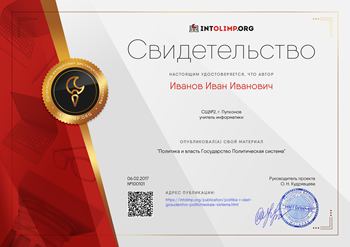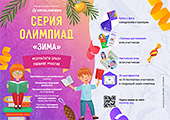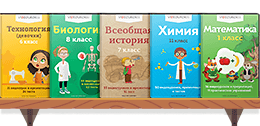Grade 2 English Smiles Lesson Plans
The lesson plans presented here provide detailed and mapping of the Grade 2 learning objectives designated within the Ministry of Education subject programme for English to the content and activities in the Smiles 2 for Kazakhstan course. The plans describe in a comprehensive way reasonable target success criteria for different ability groups of learners within classes and plot for teachers key differentiation and ongoing formative assessment opportunities in using the material.
Module Themes
Unit 1 All About Me
Unit 2 My School
Unit 3 My Family and Friends
Unit 4 The World Around Us
Unit 5 Health and Body
Unit 6 Tradition and Customs
Unit 7 The Natural Environment
Unit 8 My Holidays and Travel
Grade 2 Learning Objectives
Learners should be able to:
|
| Listening |
| 2.L1 | understand a range of short basic classroom instructions |
| 2.L2 | recognise with considerable support an increasing range of common personal questions |
| 2.L3 | understand the main points of slow and carefully articulated talk on routine and familiar topics such as number and colour |
| 2.L4 | recognise with support short basic questions relating to familiar topics such as colour and number |
| 2.L5 | identify missing phonemes in incomplete words |
| 2.L6 | understand some specific information in short, slow, carefully articulated talk on routine and familiar topics |
| 2.L7 | use contextual clues to predict content in short, supported talk on familiar topics |
| 2.L8 | understand short narratives spoken slowly and distinctly on routine and familiar topics |
| 2.L9 | recognise the spoken form of familiar words and expressions |
|
| Speaking |
| 2.S1 | make statements related to personal information, people and objects on familiar topics and classroom routines |
| 2.S2 | ask questions to satisfy basic needs and find information on familiar topics and classroom routines |
| 2.S3 | use a limited range of basic words, phrases and short sentences to describe objects, activities and classroom routines |
| 2.S4 | respond to basic supported questions giving personal and factual information |
| 2.S5 | begin to articulate clearly the difference between various sounds |
| 2.S6 | use short answers appropriately in short basic exchanges and take turns when speaking with others in a limited range of short basic exchanges. |
| 2.S7 | place stress correctly on familiar polysyllabic words |
| 2.S8 | give simple instructions for others to follow |
|
| Reading |
| 2.R1 | read and spell out words for others |
| 2.R2 | Identify, remember and sound out high-frequency sound and letter patterns |
| 2.R3 | read and follow with considerable support simple words, phrases and sentences on familiar and general topics and familiar instructions for classroom activities |
| 2.R4 | begin to use with support a simple picture dictionary |
| 2.R5 | understand the main points of simple sentences on familiar topics by using contextual clues |
| 2.R6 | understand with considerable and particularly visual support, some specific information in short, simple texts on familiar topics |
|
| Writing |
| 2.W1 | write with support short responses at phrase level to questions and other prompts |
| 2.W2 | write letters and familiar high-frequency words when read aloud or spelt |
| 2.W3 | write short phrases to identify people, places and objects |
| 2.W4 |
|
| 2.W5 | write letters and familiar high-frequency words when read aloud or spelt for learners |
| 2.W6 | use with support upper and lower case letters accurately when writing names and addresses |
| 2.W7 | spell some high frequency words accurately during guided writing activities |
| 2.W8 | include full-stop when writing very high frequency short sentences in guided writing activity. |
|
| Use of English |
| 2.UE1 | use singular nouns, plural nouns – including some common in irregular plural forms in giving simple descriptions |
| 2.UE2 | use cardinal numbers 1-50 to count |
| 2.UE3 | use common adjectives in descriptions to talk about simple feelings |
| 2.UE4 | use determiners a, an, the, any. some, this, these, that, those to identify things |
| 2.UE5 | use interrogative pronouns which, what, where and whose to ask who people are and what they are doing |
| 2.UE6 | use demonstrative pronouns this these that those to make and respond to requests for information |
| 2.UE7 | use personal subject and object pronouns to describe people and things |
| 2.UE8 | use simple imperative forms [positive and negative] for basic commands and instructions |
| 2.UE9 | use common present simple forms [positive negative and question] to talk about what you like, facts and habits |
| 2.UE10 | use common present continuous forms [positive, negative, question] |
| 2.UE11 | use have got + noun to describe and ask questions about possessions use how many are there question form |
| 2.UE12 | use basic adverbs of place here/there to say where things are |
| 2.UE13 | use can to talk about ability and make requests/offers use can/can’t to talk about permission |
| 2.UE14 | use basic prepositions of location and place: at behind between in front next to on to talk about where things are use prepositions of time: on at in to talk about days and times |
| 2.UE15 | use Would you like + noun to enquire use like + verb + ing to talk about likes and dislikes |
| 2.UE16 | use conjunctions and or but to link words and phrases |
| 2.UE17 | use me too to give short answers |
Using the lesson plans.
As you familiarise yourself with each plan and how it relates to the activities in the Smiles 2 course, add these symbols to sections of the plan to remind yourself of the main type of activity and interaction pattern involved in each stage.
W = whole class
G = group work
P = pair work
I = individual work
E = learner experiment
D = teacher demonstration
f = supports formative assessment
Use the Teacher’s Notes section to remind yourself of key equipment and material e.g. material for craftwork that you will need to bring
After the lesson use the reflection boxes to think about what worked particularly well and which activities could have been handled better to inform the way you will do things moving forward through the course. Use these sections too, to reflect on ongoing difficulties learners may be having and reflect how you may adapt future support, differentiation and checking boxes in future plans to address this.
Sample Blank Plan
Lesson plan
| LESSON: | School: | ||||
| Date: | Teacher name: | ||||
| CLASS: | Number present: | absent: | |||
| Learning objectives(s) that this lesson is contributing to | | ||||
| Lesson objectives | All learners will be able to: | ||||
| | |||||
| Most learners will be able to: | |||||
| Some learners will be able to: | |||||
| Previous learning | | ||||
| Plan |
| ||||
| Planned timings | Planned activities (replace the notes below with your planned activities) | Smiles Resources | |||
| Opening |
|
| |||
| Middle
| |
| |||
| End | |
| |||
| Additional information
| |||||
| Differentiation – how do you plan to give more support? How do you plan to challenge the more able learners? | Assessment – how are you planning to check learners’ learning? | Cross-curricular links | |||
| | | | |||
| Reflection Were the lesson objectives/learning objectives realistic? Did I stick to timings? What changes did I make from my plan and why?
| Use the space below to reflect on your lesson. Answer the most relevant questions from the box on the left about your lesson | ||||
1







